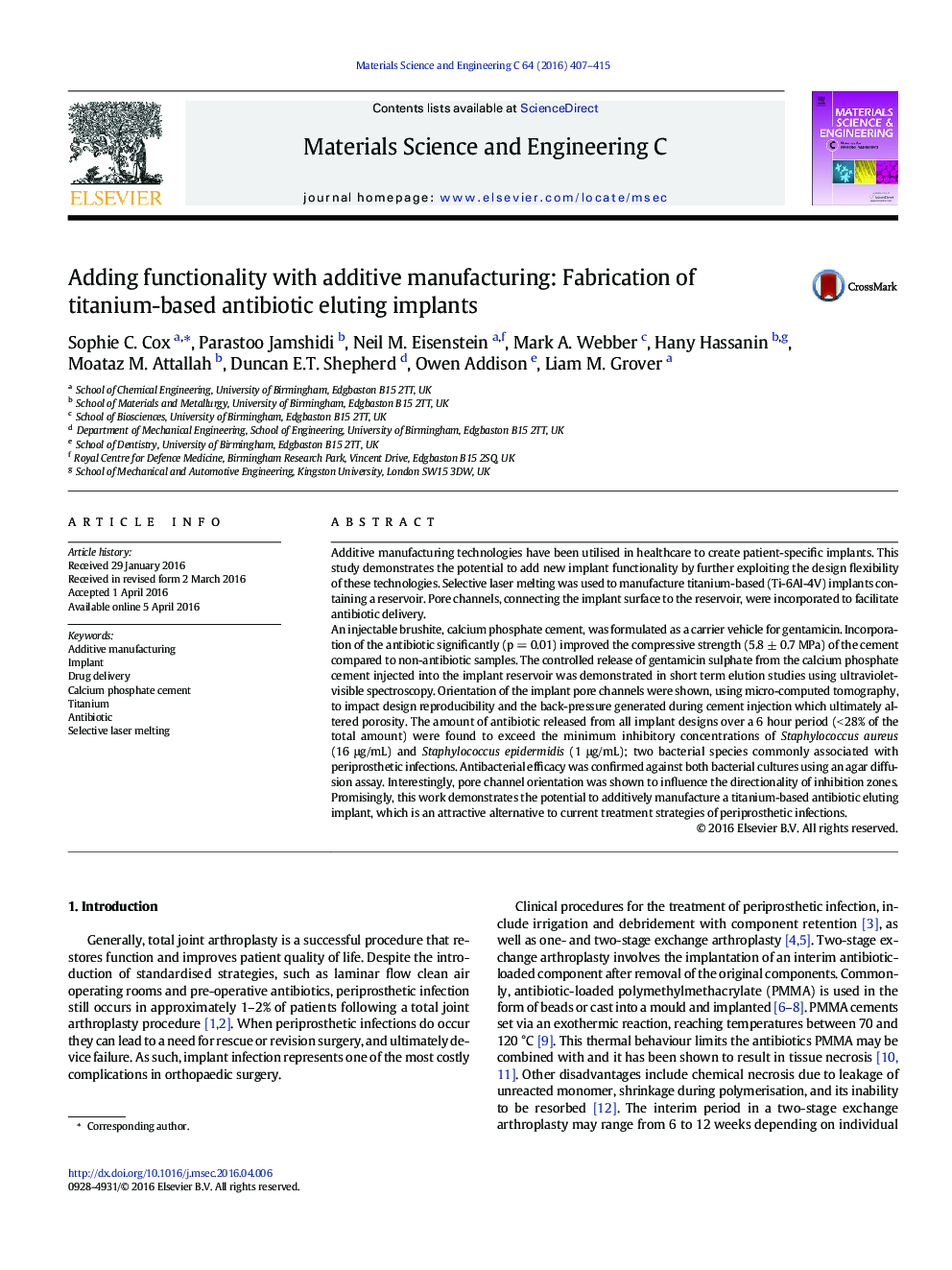| Article ID | Journal | Published Year | Pages | File Type |
|---|---|---|---|---|
| 1427977 | Materials Science and Engineering: C | 2016 | 9 Pages |
•Titanium implants were additively manufactured with surface connected reservoirs.•Implants' reservoir was injected with an antibiotic loaded calcium phosphate cement.•Pore orientation was shown to influence antibiotic elution from the implant.•Bacterial inhibition zones were observed surrounding all implant designs.•This concept may be used clinically to prevent or treat periprosthetic infections.
Additive manufacturing technologies have been utilised in healthcare to create patient-specific implants. This study demonstrates the potential to add new implant functionality by further exploiting the design flexibility of these technologies. Selective laser melting was used to manufacture titanium-based (Ti-6Al-4V) implants containing a reservoir. Pore channels, connecting the implant surface to the reservoir, were incorporated to facilitate antibiotic delivery.An injectable brushite, calcium phosphate cement, was formulated as a carrier vehicle for gentamicin. Incorporation of the antibiotic significantly (p = 0.01) improved the compressive strength (5.8 ± 0.7 MPa) of the cement compared to non-antibiotic samples. The controlled release of gentamicin sulphate from the calcium phosphate cement injected into the implant reservoir was demonstrated in short term elution studies using ultraviolet-visible spectroscopy. Orientation of the implant pore channels were shown, using micro-computed tomography, to impact design reproducibility and the back-pressure generated during cement injection which ultimately altered porosity. The amount of antibiotic released from all implant designs over a 6 hour period (< 28% of the total amount) were found to exceed the minimum inhibitory concentrations of Staphylococcus aureus (16 μg/mL) and Staphylococcus epidermidis (1 μg/mL); two bacterial species commonly associated with periprosthetic infections. Antibacterial efficacy was confirmed against both bacterial cultures using an agar diffusion assay. Interestingly, pore channel orientation was shown to influence the directionality of inhibition zones. Promisingly, this work demonstrates the potential to additively manufacture a titanium-based antibiotic eluting implant, which is an attractive alternative to current treatment strategies of periprosthetic infections.
Graphical abstractFigure optionsDownload full-size imageDownload as PowerPoint slide
